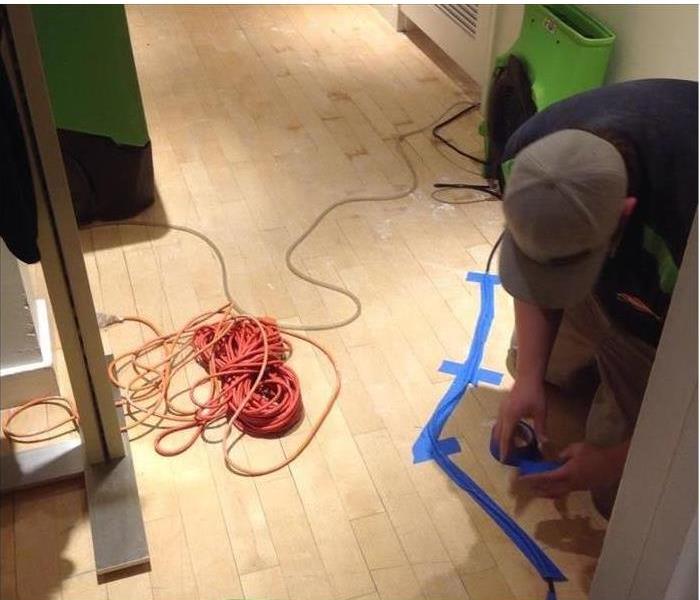4 Steps To Restore a Wood Floor
12/6/2021 (Permalink)
How To Restore A Wood Floor In 4 Easy Steps
It is important to dry a wood floor as soon as you notice signs of water damage. Water from a leak or pipe burst can cause wood to warp or result in other forms of damage. Here are four steps that may be necessary to restore wood flooring.
1. Remove Water
Removing standing water is the first step to restoring flooring. This may require the use of a pump or wet vac for damage caused by a flood, pipe burst, or leak. Use a mop or towels for slight damage. If a small amount of water has spilled and remained on the floor, spread out newspaper and allow it to absorb water.
2. Dry Moisture
After standing water is gone, use a dehumidifier to draw moisture out of wood. Ventilation can also be helpful. It is necessary to determine whether water has penetrated through the polyurethane coating or another sealing treatment. It may be necessary to tear out and replace the subfloor, taking time to allow the underlying concrete to dry, to prevent mold growth.
3. Sand and Scrape
Once all of the levels of flooring are dry, it is time to work on the appearance and condition of the surface. Wooden planks damaged by water may warp or become discolored. Sanding and scraping may even the surface and remove stains. Rely on the expertise of water damage restoration professionals.
4. Refinish or Retrofit
Wood flooring exposed to water may need to be refinished. Planks with severe damage can be removed and replacements retrofitted. Restoration experts can recommend the best solution for each case of water damage.
Keep in mind that wood flooring may add several days to water damage restoration, particularly in cases of extensive damage caused by a flood or pipe burst. This is necessary to restore the condition of a wet floor and prevent secondary damage, such as mold. Contact a service with experience restoring wood floors at commercial properties in Norman, Ok.





 24/7 Emergency Service
24/7 Emergency Service
